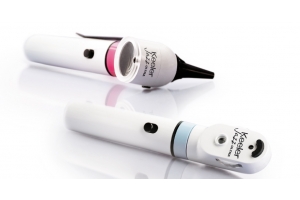
For many patients, the idea of ophthalmological surgery can be scary, but the results can be transformative – from seeing more clearly to halting a dangerous eye condition.
A range of procedures is used to treat and correct a wide range of eye problems and visual impairments.
Continue reading to learn more about the four most common types of ophthalmic surgery.
Refractive Surgery
Refractive eye surgery helps correct the eye’s focus so that glasses or contact lenses are no longer required to see clearly.
Farsighted or nearsighted patients suffer from a refractive error in their eyes, which means light entering the eye doesn’t correctly focus on the retina. Instead, light focuses either behind the retina (in farsighted individuals) or in front of the retina (in nearsighted individuals). As a result, images can appear out of focus and blurry.
There has been a staggering increase of nearsightedness (also known and myopia) in recent years.
By the year 2050, it is predicted about half of the world's population will be myopic.
Refractive ophthalmic surgery corrects this error and allows light to accurately focus on the retina to eliminate the need for corrective lenses and improve vision.
Laser eye surgery has become increasingly popular – with good reason too; stats show a 96% success rate in all laser eye categories, with 90% of patients getting 20/20 vision or better.
Some of the most popular refractive eye procedures include:
- Intacs, ICRs, or Intracorneal Rings
- Conductive Keratoplasty (CK)
- Laser Assisted In Situ Keratomileusis (LASIK)
- Laser Assisted Subepithelial Keratomileusis (LASEK) or Epi-LASIK
- Photorefractive Keratectomy (PRK)
Types of Glaucoma Surgery
Today, around 80 million people have glaucoma worldwide and this number is expected to increase to over 111 million by 2040.
Glaucoma is a condition of increased pressure within the eyeball, causing gradual loss of sight. Without treatment, it can eventually lead to blindness; however, early diagnosis and treatment can help prevent symptoms such as headaches and a decline in vision loss.
|
Read more about the link between glaucoma and headaches >> |
There are two different types of glaucoma surgeries that can be used to combat the condition by reducing intraocular pressure.
- Laser surgery uses a focused beam of light to treat trabecular meshwork, which should help improve the flow of fluid out of the eye. In most instances, laser surgery will be the first step. If it’s unsuccessful, the patient’s IOP continues to rise again, or if the optic nerve is badly damaged, incisional surgery may be performed.
- Incisional surgery – also called filtering surgery – involves creating a hole for drainage in the eye using a tiny surgical tool. The newly formed opening facilitates the aqueous fluid to flow out of the artificial canal and bypass the clogged drainage canals.
Cataract Eye Procedures
Cataracts are when the eye lenses develop cloudy patches. Over time these can become larger, causing blurry, misty vision and eventually blindness.
Cataracts mainly develop due to age; however, some eye trauma and genetic disorders that cause other health problems can also increase the risk.
Cataract surgery is the most common refractive surgical procedure performed in the over 40s.
For patients with a significant number of cataracts, they may require the extraction and replacement of the lens. And there are several different types of cataract surgical procedures that can be performed:
- Extracapsular Cataract Extraction (ECCE)
- Intracapsular Cataract Extraction (ICCE)
- Laser-Assisted Cataract Surgery (LACS)
- Phacoemulsification or Phaco
- Cryoanalgesia
Corneal Types of Eye Surgery
Corneal surgery can include everything from modifying the cornea to improve the patient’s vision to full corneal transplant surgery, which is where a diseased or damaged cornea is taken out and replaced with an organ donor’s clear cornea. Other types of corneal surgery can include:
- Pterygium Excision
- Phototherapeutic Keratectomy (PTK)
- Penetrating keratoplasty (PK)
Get in touch
If you’re looking for the best optometry exam room equipment, Keeler Ophthalmic Instruments will meet your needs and exceed your expectations. For more than 100 years, we’ve continually innovated to help eye care professionals deliver exceptional results.
|
Contact Keeler Ophthalmic Instruments for a full selection of tools and diagnostic equipment |









